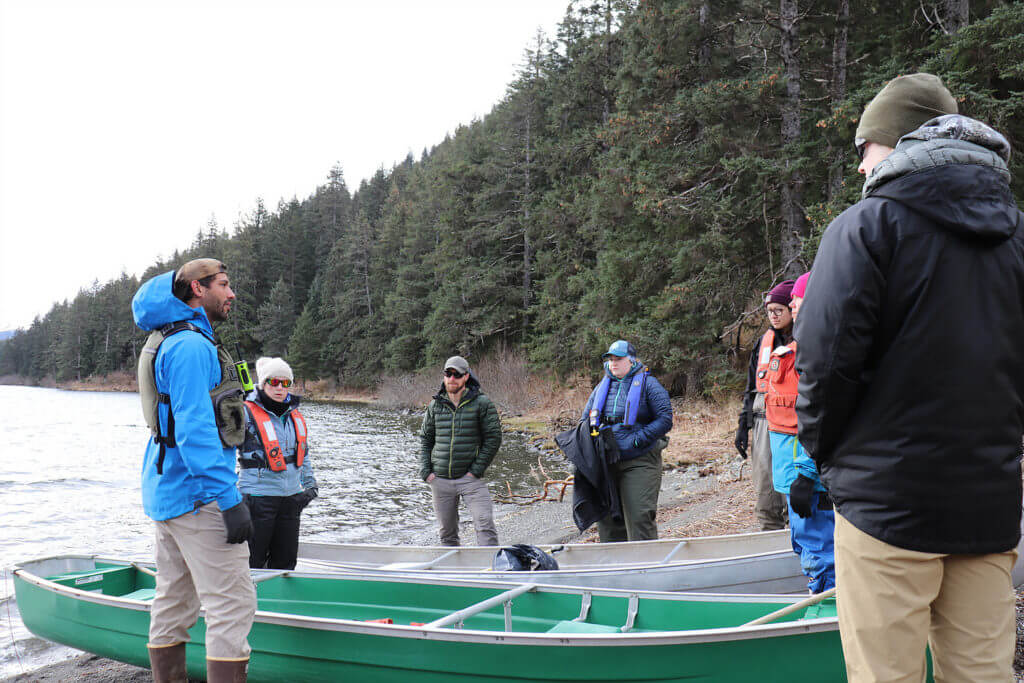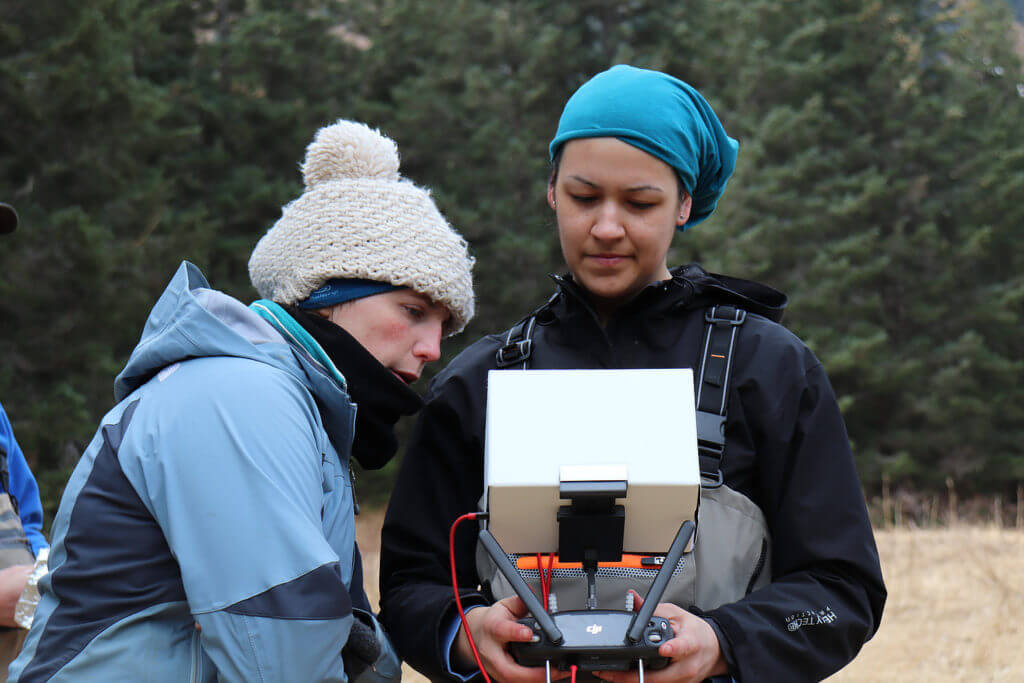
Meadhbh Moriarty and Karli Tyance Hassell fly a drone to map Nanwalek’s lake system, which is host to the community’s local sockeye salmon run.
In May block this year, undergrad and graduate students, participated in the Fisheries Ecology course taught by Dr. Brad Harris, director of the Fisheries, Aquatic Science, and Technology (FAST) Lab. The class was similar to the Icthyology course taught during the same period last year but included even more material and activities.
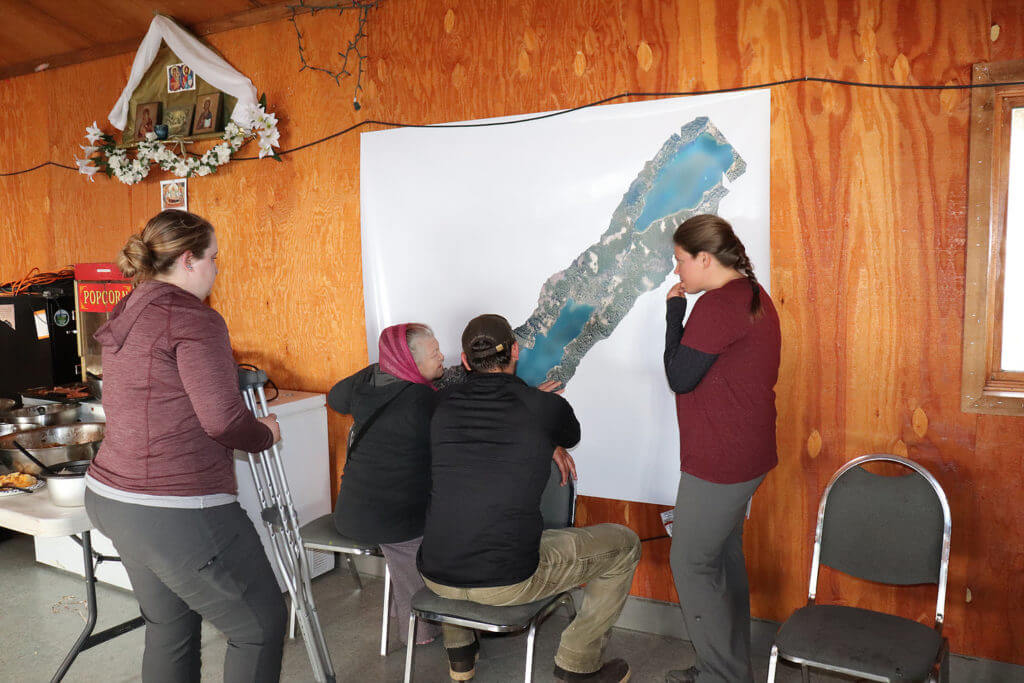
FAST Lab students discuss the mosaiced drone images of the Nanwalek lake system with community members.
Students helped ADF&G staff with Pacific razor clam surveys, building salmon weirs on different rivers, and restocking the Nick Dudiak lagoon on the Homer spit with baby salmon. The class also revisited the Alaskan native village of Nanwalek, located across Kachemak Bay near Port Graham; which the Icthyology class had visited back in May 2017.
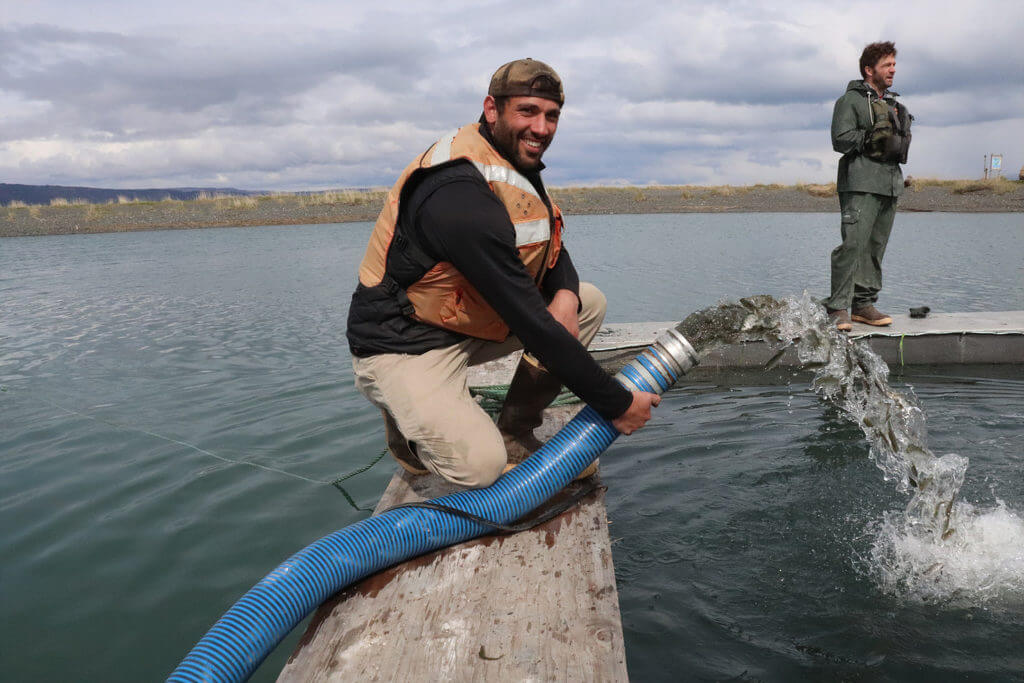
FAST Lab student Cory Lescher helps ADF&G staff restock the Nick Dudiak lagoon on the Homer spit with silver salmon.
During the visit to Nanwalek, the Fisheries Ecology students participated in a fisheries activity school day with the local kids. They led three activities with the young students – a fish form and function station, a drones and mapping station, and an eDNA station. FAST Lab graduate student Karli Tyance-Hassell gave a mosaiced map of drone images from last year’s visit of Nanwalek’s nearby lake system, which hosts a sockeye salmon run. There have been concerns in the community about a decline in the salmon run, and Karli’s master’s thesis focuses on mapping the area and determine potential sources of the decline, as well as exploring traditional ecological knowledge in salmon fishery monitoring and management.
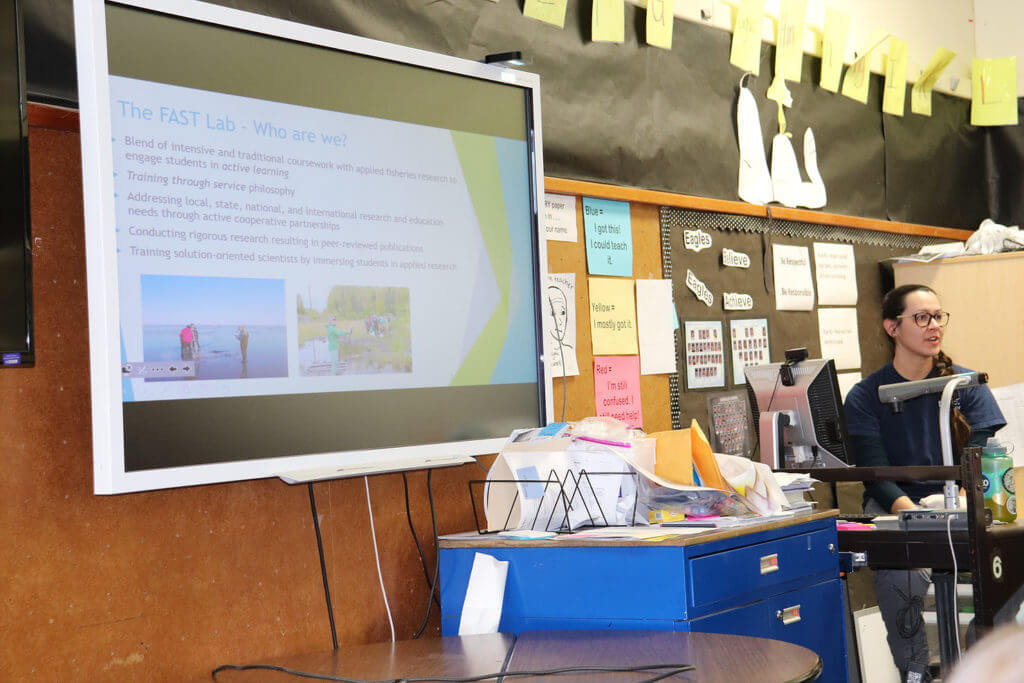
Karli Tyance Hassell begins the fisheries activities with the kids at the local school in the community of Nanwalek.
APU president Dr. Bob Onders flew over to Nanwalek during the class’s visit to meet community members and leaders. During community and council meetings, Dr. Onders spoke to the community about the new partnership between APU and ANTHC. The fisheries ecology class and Dr. Onders even participated in a community basketball game!
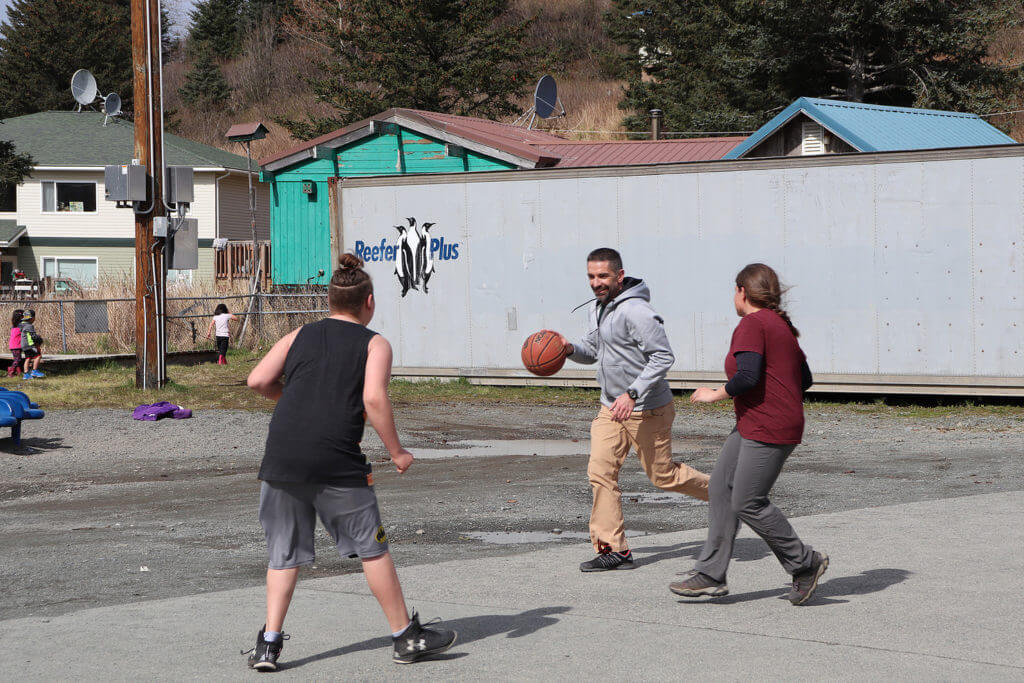
APU president Dr. Bob Onders shows off his basketball skills with the FAST Lab and Nanwalek students.
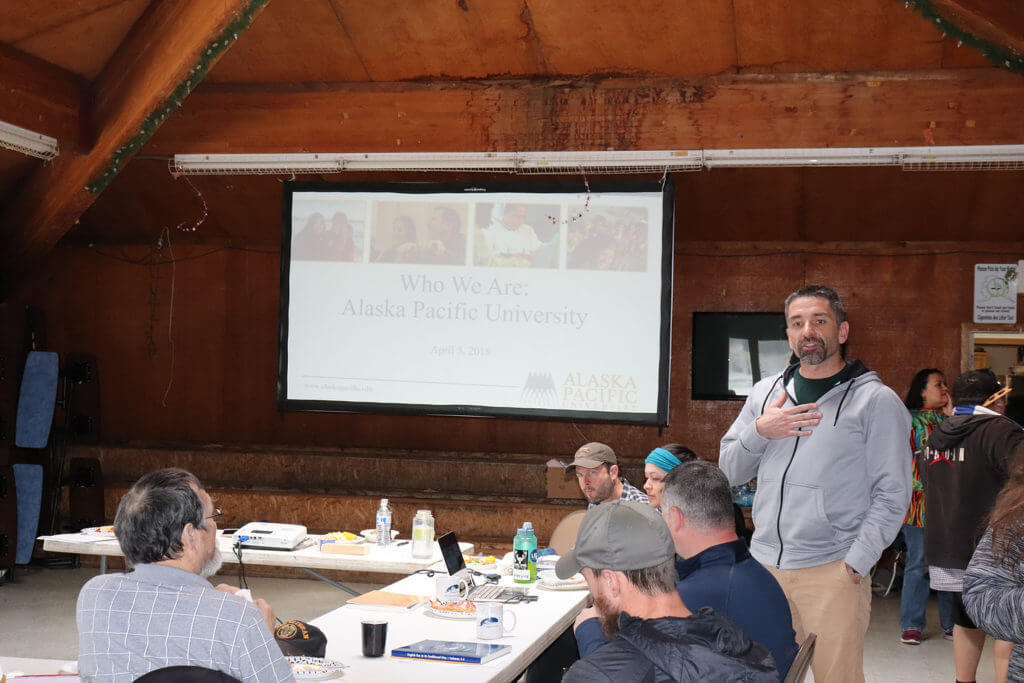
APU president Dr. Bob Onders speaks to the community of Nanwalek about APU and its new partnership with ANTHC.
The class also listened to several talks given by local fisheries biologists and researchers, such as Ken Goldman, Ted Otis, Mike Booz, Coowe Walker, Maya Groner, and the FAST Lab’s Nathan Wolf, Suresh Sethi, and Bobby Murphy. The topics ranged on a variety of topics from applications of social science in fishery systems, to managing marine diseases in fished populations.
Students were able to take full advantage of APU’s focus on active learning and getting the opportunity to explore the Kenai peninsula. While the weather was a bit cooler than last year, the scenery was no less beautiful or the work done any less interesting!
